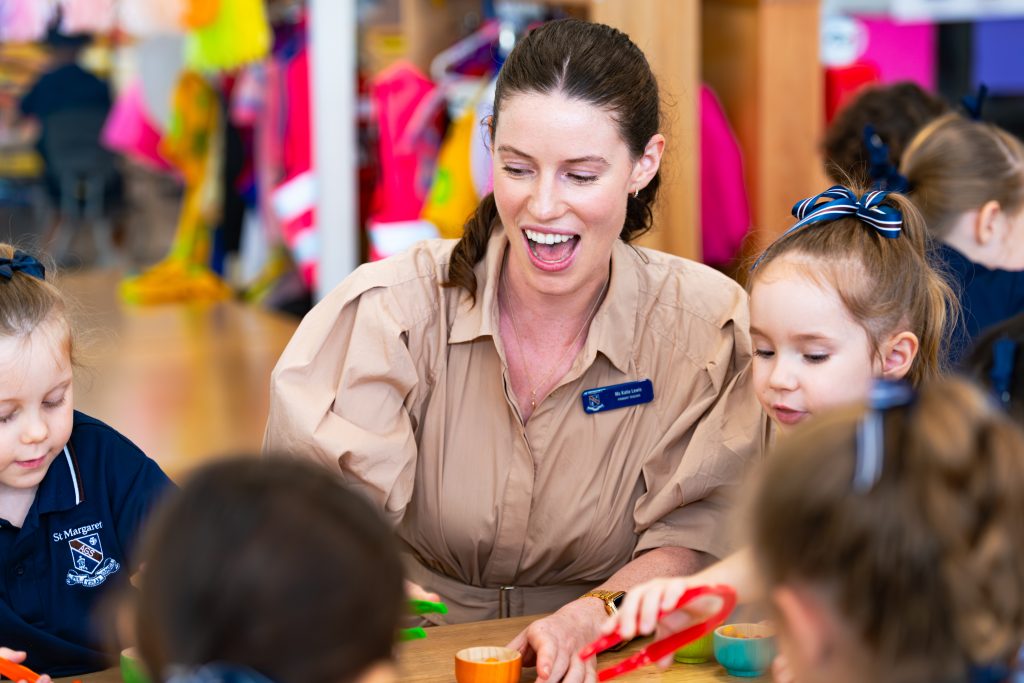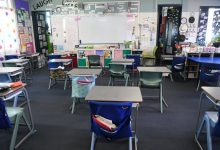
The news is filled with stories about the current teacher shortage, which has no end in sight.
People blame the increased compliance load for teachers, the pressures brought on from the COVID lockdowns, the fact that Australian schools are 69th on the list of 77 OECD countries for the most disruptive classrooms, growing disillusionment with the profession, specifically poor resourcing, and the teacher retirement cliff. Regions and school systems have their own set of concerns, reflecting their special context and need for subject experts.
Read the latest print edition of School News HERE
Generally, though, we are experiencing the current teacher shortage for two reasons: late and inadequate workforce planning by our governments and industry representatives; and a change in societal attitude to teachers, particularly their authority and the respect for the vital role all teachers play in the lives of young people.
The current teacher shortage was predicted when I was an early career teacher 35 years ago, but back then, 2020/2030 seemed a long way into the future. There has been a lengthy period of inaction that has led to the current and inevitable teacher shortage.
This inaction is almost unforgivable given that teachers are vital to the knowledge economy, and a lack of motivated, respected, and qualified teachers who can help create a highly skilled workforce weakens Australia. Government pundits refer to the shortage as ‘an unprecedented challenge.’ I tend to see it as a crisis, given the way teachers are always called upon to leverage improvements in our society.
The opening statement of The Hon Jason Clare MP, Minister for Education, 2022 paper on Teacher Workforce Shortages Issue Paper reiterates the value placed on teachers: “Teachers are the lifeblood of the education system and have the greatest in-school impact on student learning” (Clare, 2022, p.3). When the paper was published, it was predicted that the demand of secondary teachers would exceed the supply of new graduate teachers by approximately 4100 between 2021 to 2025 (Clare, 2022).
The information published by AITSL in the Australian Teacher Workforce Data reveals the extent of the problem:
- 24 percent is the percentage of male teachers in Australia.
- 38 percent of all registered teachers are aged 50 years and over.
- 12 percent of registered teachers are currently not employed in schools or are on leave.
- 10.5 percent of the teacher workforce in 2020 are intending to leave the profession in the next 10 years for reasons other than retirement.
Simon Kuestenmacher from The Demographic Group, in reference to just secondary teachers and noting it was similar for primary teachers, offered the following observation using the teaching population statistics (August 2023). Twenty-eight thousand secondary Australian teachers will be needed in the next decade to fill the gap caused by teachers retiring plus 6000 more to cope with Australian migration. This does not take into account the replacement of teachers who leave the profession or go on leave.
He notes that Australia has never been able to graduate 3400 new secondary teachers per year who end up in schools, and even if we came close, there is a retention problem.
Simon Kuestenmacher also claims we are in a cycle that we will find difficult to turn around:
“More teachers than ever consider leaving the profession. The last few pandemic years were not fun, and pay is better in other industries. Also, remember that in any short-staffed industry, the existing staff gets worked half to death. This creates a downwards spiral. The more people decide to leave an industry, the more the remaining workers have to work, the more likely the remaining workers are then to leave the industry.”

Given all this data, in December 2022, Education Ministers of all the states and territories agreed on a National Teacher Workforce Action Plan, which sets out a clear plan to address the national issue of teacher workforce shortages. The Action Plan (representing an investment of $337 million by the Australian Government) builds on a range of initiatives already underway in jurisdictions, sectors, and individual schools.
However, is it too late? We are already in this crisis. The good news is that the Action Plan is in train, having identified several important actions across five priority areas. These priority areas address the primary drivers of teacher shortages and include the following:
- Improving teacher supply – to increase the number of people choosing teaching as a career.
- Strengthening initial teacher education – to ensure initial teacher education supports teacher supply and delivers classroom ready graduates.
- Keeping the teachers we have – to improve retention by increasing support for teachers, enhancing career pathways, reducing unnecessary workload, and freeing up teachers to focus on core teaching tasks and collaboration.
- Elevating the profession – to recognise the value teachers bring to students, communities, and the economy.
- Better understanding future teacher workforce needs – to improve the information available for teacher workforce planning.
These are all appropriate initiatives and, if executed well, will address the problem in the intermediate to long term. In the short term, however, schools will need to take the mantle wherever possible in these priority areas, in order to attract and retain teachers.
At St Margaret’s, there are several strategies we have implemented primarily complementing priority area three: improving retention and enhancing career pathways.
In 2023, the school introduced a Professional Learning Framework to help guide all staff on a meaningful and impactful professional learning journey. Professional learning can take a variety of forms; however, importantly, it operates under the premise that all staff, no matter their experience or position, can acquire meaningful, professional growth in their careers. The St Margaret’s Professional Learning Framework articulates the lens through which staff professional learning is viewed. The framework is underpinned by five principles that guide all professional learning opportunities at the school.
St Margaret’s has established a Centre for Teaching and Learning Excellence (CeTLe), of which some of the programmes are open to not only St Margaret’s staff but teachers from other independent South East Queensland schools. CeTLe is one of the strategies helping us to encourage teachers to join and stay in the profession.

The centre’s Aspiring Senior Leaders Program for middle leaders is an 18-month in-house programme aiming to impart broader skills, along with developing a knowledge and mindset required to lead a school. Meanwhile, an Early Career Teachers programme supports teachers just starting out in their careers with the development of their professional identity. In addition, the school offers workshops to expose earlier career teachers to how to manage their professional growth and experience so that they will be ready to apply for middle leadership roles such as Head of Year.
In 2019, we introduced the Born to Fly Scholarship aimed at supporting undergraduate teachers to gain further real-world experience and professional learning during their studies. The scholarship benefits not only beginning teachers but St Margaret’s experienced educators, whereby learning from each other generates best practice across the profession. As undergraduate teachers gain practical support and inspiration from our experienced educators, so too do our mentor teachers reflect on and critically analyse their own practice as well as develop their leadership skills.
A major issue driving the lack of teachers are worries of being overworked and under supported and the toll this takes on their health.
At St Margaret’s we have countered this by implementing innovative policies to ensure all staff work in a collegiate and positive environment.
Each year, we conduct a staff survey facilitated by education consultancy MMG. The 2023 survey exceeded MMG benchmarking data on all measures, in some cases by up to 18 percent. In addition, the Net Promoter Score, based on how likely staff were to recommend the school as an employer, was +44, where a score above 23 is considered ‘very high’.
Our teachers and support staff are seen and known and cared for in a holistic manner that promotes their mental and physical wellbeing as well as nurturing their professional ambitions.

St Margaret’s has a range of initiatives across both its pillars of staff support.
The first pillar is Wellbeing and some of the policies include:
- a highly active Staff Wellbeing committee coordinating events, publishing a termly newsletter, and managing a Wellbeing Hub on staff intranet
- random acts of kindness nominated throughout the year and coffee vouchers awarded at weekly catered morning teas for staff
- access to the school strength and conditioning gym and a staff swim squad in the school pool
- employee assistance offering external, confidential counselling service, with a number of sessions free of charge
- wellbeing presentations given with guest speakers (doctors, psychologists and time management specialists etc)
- gifts of appreciation when staff attend camp taking them away from their own families and personal lives for several nights
- a significant upgrade to the staffroom at the beginning of 2022 to assist with staff networking on both a professional and collegial level
- acknowledgement on World Teachers’ Day with a complimentary breakfast and small gift.
The second pillar is Professional Development and is implemented by:
- staff being encouraged to pursue further study, with subsidies for Masters study and a study day per semester
- staff applying for annual teacher exchanges, overseas and domestically
- an annual innovation award where staff put forward an innovation in an area they would like to pursue, and each year, two to three staff members are given a grant to facilitate this
- annual staff awards awarded at Speech Night for teaching and support staff – one for teaching excellence and the other for service to the community
- one-day Early Career Teachers workshop to help with development of professional identity.
I am proud that the steps we have taken to help mitigate the impact of the teacher shortage, not just at St Margaret’s but in the wider educational community, have been recognised and have seen the school awarded Employer of Choice for the last four consecutive years.
As an educator, I am deeply concerned for the future of the profession. Although the government’s Action Plan is a good one, the timeliness and the quality of its execution are critical. Politicians, both state and federal, need to act without delay. However, educators have a significant role to play. Teaching is and can be a very attractive career, and members of the profession need to encourage others to join it. By demonstrating unwavering support and care for staff, we can not only attract and retain our biggest asset, but we can also show just how rewarding and positive teaching can be. The stronger our teaching workforce, the better educated our society will be and that has enormous effects on generations of young Australians. The future of Australia depends on us.
References:
Australian Government, Department of Education. (2024). National Teacher Workforce Action Plan. https://www.education.gov.au/national-teacher-workforce-action-plan
Australian Institute for Teaching and School Leadership (aitsl). (2017). Australian Teacher Workforce Data. https://www.aitsl.edu.au/research/australian-teacher-workforce-data
Clare, J. (2022, August 8). Teacher Workforce Shortages Issues Paper. https://ministers.education.gov.au/sites/default/files/documents/Teacher%20Workforce%20Shortages%20-%20Issues%20paper.pdf
Kuestenmacher, S, (2023, August 10). Without enough teachers Australia won’t make the grade. The New Daily. https://www.thenewdaily.com.au/opinion/2023/08/19/the-stats-guy-teacher-shortage
Kuestenmacher, S. (2024, April 6). A Growing Problem looms for Australian Schools as Teachers Flee. The New Daily. https://www.thenewdaily.com.au/opinion/2024/04/06/stats-guy-teacher-shortage
Long, C. (2023, December 1). Australian school students need lessons on how to behave, classroom disruption inquiry says. ABC News. https://www.abc.net.au/news/2023-12-01/australian-kids-disruptive-classroom-school-behaviour-report/103176212
Longmuir, F. (2023, January 30) Australia’s teacher shortage is a generational crisis in the making. How can we turn things around? ABC News. https://www.abc.net.au/news/2023-01-30/pandemic-exposed-australia-teacher-shortage-students-schools/101886452
This article was first published in the Term 4 edition of School News. Read it online HERE







